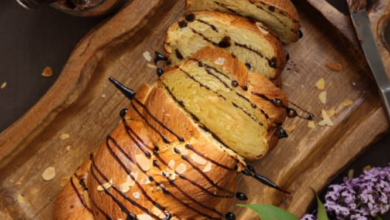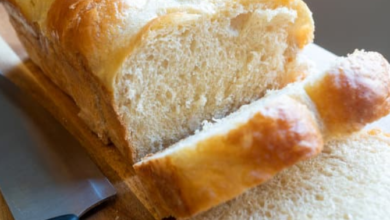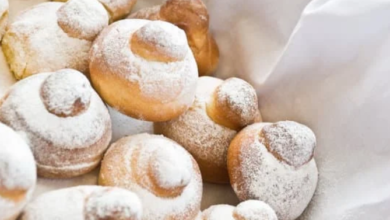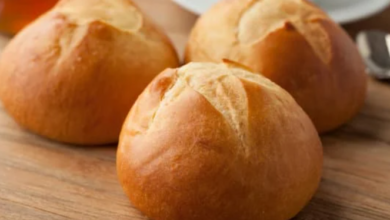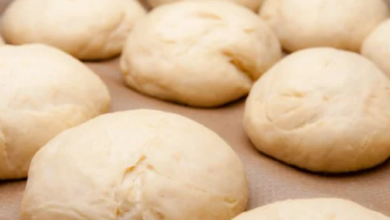Brioche Vs. Danish: What’s the Difference?
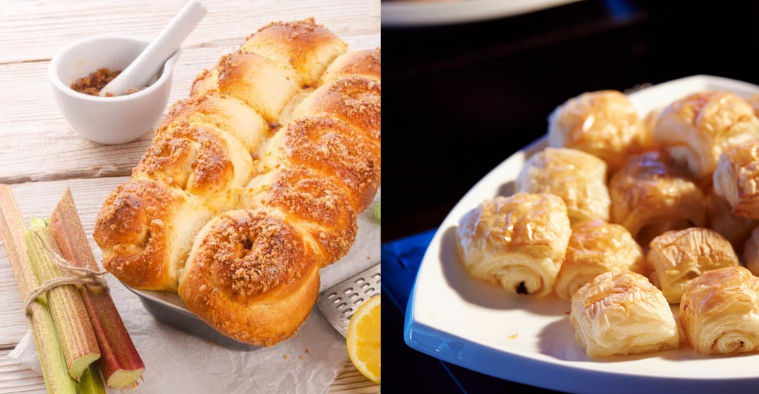
What To Know
- It is baked at a relatively low temperature for an extended period, resulting in a golden-brown crust and a soft, fluffy interior.
- They are baked at a higher temperature for a shorter time, giving them a crispy, caramelized exterior and a tender, buttery center.
- It is not a particularly nutritious choice but can be enjoyed in moderation as a treat.
Indulge in the tantalizing world of pastries as we delve into the captivating debate between two culinary masterpieces: brioche and Danish. These delectable creations share a common bond of buttery richness, yet each possesses distinct characteristics that set them apart. Let us embark on a culinary journey to uncover the nuances and similarities of these beloved treats.
Origin and History
Brioche: This French delicacy traces its roots back to the 16th century. Its name derives from the Old French word “broyer,” meaning “to crush,” referring to the kneading process that gives it its signature texture.
Danish: Contrary to its name, this pastry originated in Austria in the 19th century. Known as “wienerbrød” in Denmark, it gained popularity in the United States after Danish immigrants introduced it in the early 20th century.
Dough Composition
Brioche: Brioche dough is characterized by its high butter content, which contributes to its rich and tender crumb. It also contains eggs, milk, and a small amount of sugar, resulting in a slightly sweet and brioche-like flavor.
Danish: Danish dough is made with a combination of butter, flour, yeast, and water. It is laminated, meaning that layers of butter are folded into the dough during the kneading process, creating a flaky and airy texture.
Shaping and Baking
Brioche: Brioche is typically shaped into individual rolls, loaves, or fancy braids. It is baked at a relatively low temperature for an extended period, resulting in a golden-brown crust and a soft, fluffy interior.
Danish: Danish pastries are known for their intricate shapes, such as crescents, snails, and rings. They are baked at a higher temperature for a shorter time, giving them a crispy, caramelized exterior and a tender, buttery center.
Flavor and Texture
Brioche: Brioche has a delicate, buttery flavor with a hint of sweetness. Its crumb is soft, tender, and slightly chewy, making it ideal for breakfast, sandwiches, or as a dessert.
Danish: Danish pastries boast a more pronounced buttery flavor with a flaky, crispy texture. The filling, which can vary from fruit preserves to cream cheese, adds an extra layer of sweetness and richness.
Versatility
Brioche: Brioche is incredibly versatile and can be enjoyed in various ways. It serves as an excellent base for sandwiches, French toast, bread pudding, or simply spread with butter and jam.
Danish: Danish pastries are perfect for breakfast, brunch, or as an afternoon treat. They can be filled with a wide range of ingredients, including fruit, nuts, and chocolate, making them a crowd-pleaser for any occasion.
Nutritional Value
Brioche: Brioche is a calorie-rich pastry due to its high butter and egg content. It is not a particularly nutritious choice but can be enjoyed in moderation as a treat.
Danish: Danish pastries are also high in calories and fat, but they offer slightly more nutritional value than brioche due to the presence of fruit fillings.
Which Pastry to Choose?
The choice between brioche and Danish depends on personal preference. If you prefer a soft, tender pastry with a buttery flavor, brioche is an excellent choice. If you crave a flaky, crispy pastry with a sweet filling, Danish is the way to go.
Final Thoughts: The Culinary Symphony of Brioche and Danish
Brioche and Danish are both exceptional pastries that offer unique culinary experiences. Whether you prefer the delicate richness of brioche or the flaky indulgence of Danish, these treats will tantalize your taste buds and leave you craving more. The next time you find yourself at a bakery, embrace the opportunity to savor the symphony of flavors and textures that these culinary masterpieces have to offer.
Popular Questions
1. What is the difference between brioche and croissant?
Brioche has a denser, softer crumb, while croissants have a flaky, airy texture due to the lamination process. Croissants also tend to be more buttery in flavor.
2. Can I make brioche at home?
Yes, making brioche at home is possible, but it requires time and effort due to the kneading and rising process.
3. What is the best way to store brioche?
Store brioche in an airtight container at room temperature for up to 2 days. For longer storage, wrap it tightly and freeze it for up to 2 months.
4. What is the best way to reheat Danish pastries?
Reheat Danish pastries in a preheated oven at 350°F (175°C) for 10-15 minutes, or until warmed through.
5. Can I make Danish pastries with gluten-free flour?
Yes, there are gluten-free Danish pastry recipes available, but they may not have the same texture as traditional Danish pastries.
